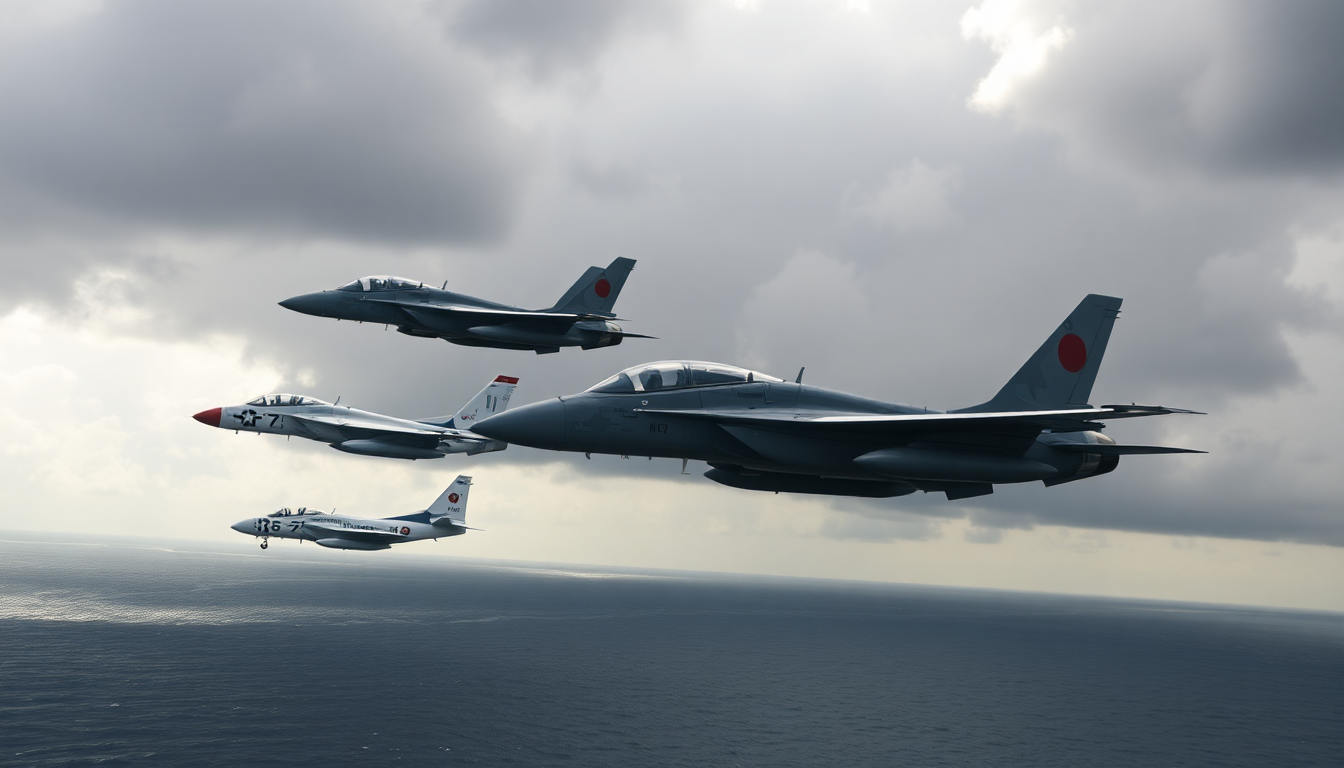Table of Contents
The Pacific region, once a vast expanse of calm waters, is now a bubbling cauldron of military posturing. Just when you thought it was safe to sail the high seas, Japan finds itself dodging not just waves but also the reckless antics of Chinese J-15 warplanes.
Yes, you heard that right. Picture this: a Japanese P-3C maritime patrol plane minding its own business, when suddenly, a Chinese fighter jets swoop in like they own the sky. Doesn’t that just get your blood boiling? It’s like a bad action movie, but with real stakes.
The audacity of proximity
Japan’s Kyodo news agency reported a jaw-dropping incident where a J-15 warplane from the Shandong aircraft carrier got cozy with a Japanese P-3C, flying within a mere 45 meters. That’s like having someone invade your personal space during a pandemic.
What’s next? Are they going to start waving at each other? The Chinese military seems to think it’s perfectly acceptable to engage in what can only be described as ‘dangerous maneuvers.’ And here’s Japan, left to express ‘serious concern’—how dignified! But really, what does that even mean in the face of such blatant recklessness?
Chasing shadows in the sky
To make matters worse, it wasn’t just a one-time event. Over the course of two days, these J-15s played a high-stakes game of tag, with one Chinese fighter chasing a Japanese P-3C for an astonishing 80 minutes.
I mean, seriously? Who has that kind of time? It’s almost comical, really, if it weren’t so dangerous. Can you imagine the pilots? ‘Hey, let’s see how close we can get without crashing!’ Such a brilliant plan. And let’s not forget the Japanese defense ministry, which has now taken to releasing images of these close encounters, as if to say, ‘Look at us! We’re not just sitting ducks!’
Accidental collisions and diplomatic fallout
The reality of these reckless maneuvers is that they could lead to accidental collisions. It’s as if the Chinese military is playing a game where the stakes are much higher than any video game. The Japanese defense ministry has expressed their worries, but what’s the point? Sending a strongly worded note doesn’t exactly stop fighter jets from zooming past like they’re in a scene from Top Gun. Meanwhile, Yoshimasa Hayashi, Japan’s Chief Cabinet Secretary, is left to maintain the façade of diplomacy, ensuring that communication channels with Beijing remain open. Isn’t that just precious?
A historical context
Let’s take a moment to appreciate the irony here. The last time something like this happened was ages ago—in 2014, to be exact—when Chinese Su-27 jets got a little too close for comfort. You’d think they’d learn from history, but apparently, military bravado is a hard habit to break. And what about those carrier drills? The Shandong was spotted performing takeoff and landing maneuvers right next to Japan’s exclusive economic zone. It’s like they’re waving a big flag saying, ‘Look what we can do!’ Talk about rubbing salt in the wound.
What’s next for the Pacific?
As this saga unfolds, one has to wonder what the next chapter holds for Japan and its neighbors. Will there be a reckoning? Or will it just be more of the same—China flexing its muscles while Japan tries to keep its cool? The whole situation is like a bad soap opera, except the stakes are much higher. In the end, one can only watch with a mix of disbelief and bemusement as these major powers engage in a dangerous game of cat and mouse. So, here’s to hoping that cooler heads prevail—because heaven knows we could use a little less drama in the skies.





